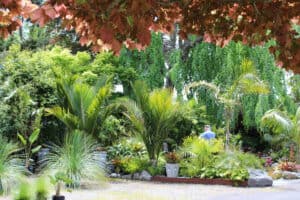Palms are one of the most recognizable and iconic types of trees in the world. Their distinctive look and ability to thrive in tropical environments make them a favourite among gardeners and plant enthusiasts. While New Zealand’s climate is not ideal for most tropical palm trees, there are many species that can be grown successfully in certain parts of the country.
New Zealand’s climate might not seem to be suitable for growing palm trees, but there are many subtropical palm tree species that can thrive here. Unlike tropical palms that require warm and humid climates, these subtropical palm trees prefer our climate in New Zealand and can tolerate colder weather. They are well-suited to New Zealand’s unique weather patterns, and with the right care, they can grow and flourish in our country. So, if you’re hoping to create the tropics in your backyard, consider exploring the many subtropical palm tree options that can grow successfully in New Zealand.
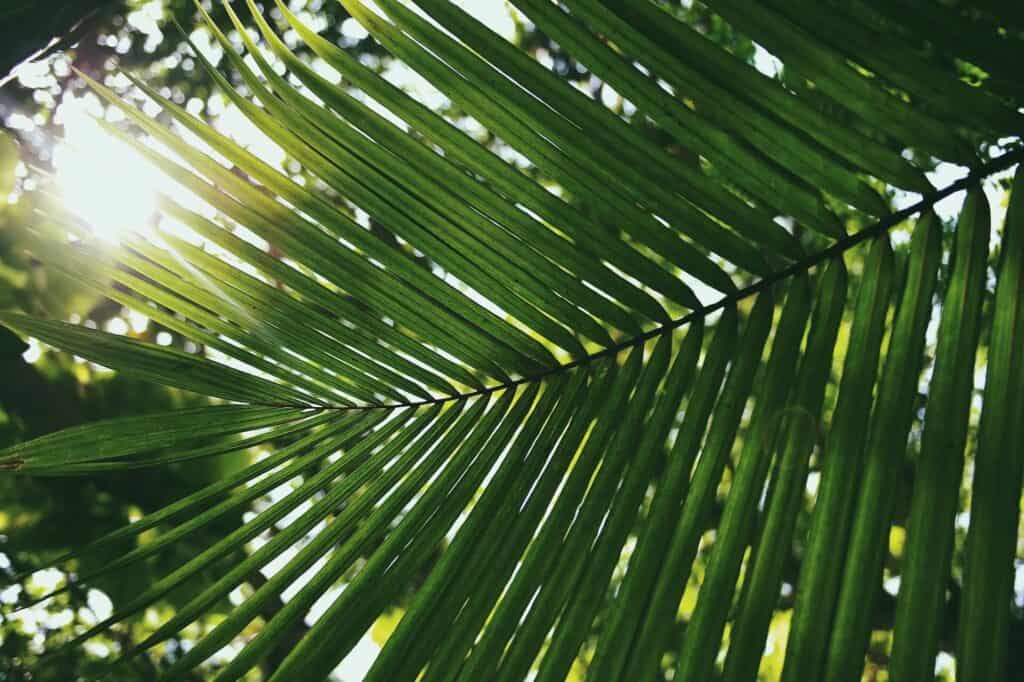
Types of Palm Trees that can be grown in New Zealand
Tropical Treasures Taranaki has been successfully growing a diverse selection of exotic palm trees in New Zealand, despite the common misconception that only certain types can thrive in the country. Along with the Queen Palm and Trachycarpus, there are several other palm varieties that flourish in the unique environment, such as the Sugarcane Palm, Cluster Palm, and Wedding Palms, among others. Whether you aim to create a tropical paradise in your own backyard or add some personality to a public area, there are plenty of palm tree options to choose from.
If you’re thinking about growing palm trees in New Zealand, there are a few things you should keep in mind to make sure your garden is a success. Firstly, the location of your garden, the quality of your soil, and protection from cold winds are all factors that can affect how well your palm trees grow. Additionally, some palm tree species may need extra care during the winter months to protect them from frost damage.
But don’t worry, we’re here to help! At Tropical Treasures Taranaki, we’re experts in palm trees, and we’re always happy to offer advice and guidance to make sure you choose the right species for your garden. Our local knowledge means we can give you the best advice on which palm trees will thrive in your specific location. And to get you started, we’ve put together a list of 30 types of palm trees that can be grown right here in New Zealand. Let’s get started!
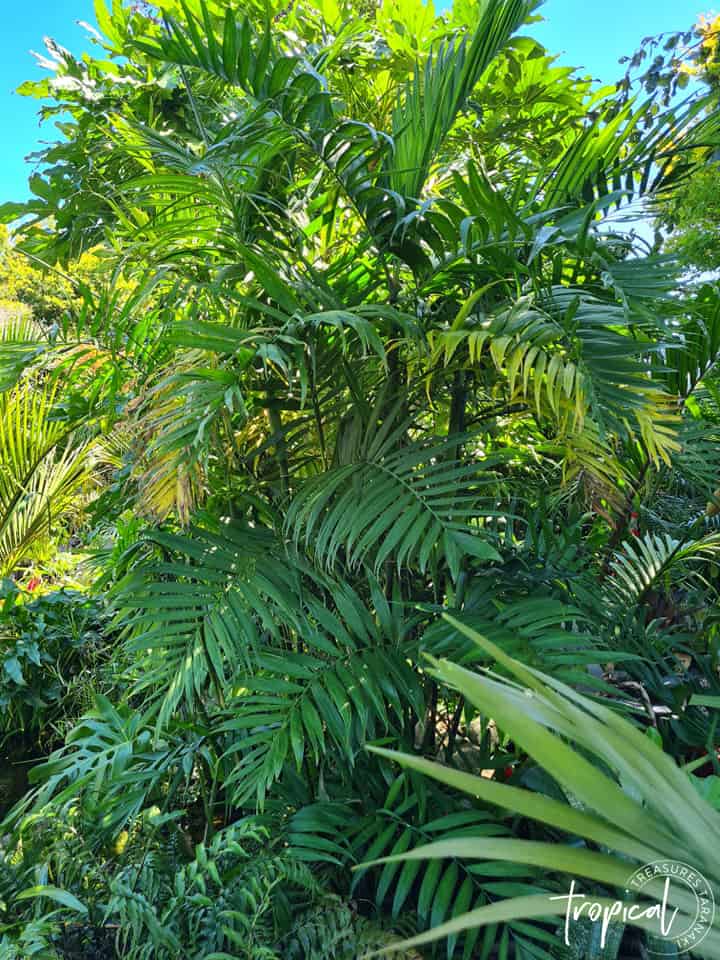
Cluster Palm (Chamaedorea costaricana)
The Cluster Palm, or Chamaedorea costaricana, is an excellent palm tree for screening or under planting in smaller gardens. This palm tree is easy to grow and fills out quickly, creating a lush, tropical look with its many fronds and slender stems that resembles a bamboo tree. This palm tree is best suited for relatively sheltered spots in part shade to full sun. It grows to a height of approximately 3 meters and a width of 0.5 meters.
Wedding Palm (Lytocaryum Weddelwam)
The Wedding Palm (Lytocaryum Weddelwam) is a popular, small palm tree that is native to South America. It is known for its slender, cane-like stems and elegant, arching fronds, which give it a delicate, refined appearance. The Wedding Palm is a slow growing palm tree that can reach heights of up to 2 meters in ideal conditions. It prefers partial shade to full sun and well-draining soil.
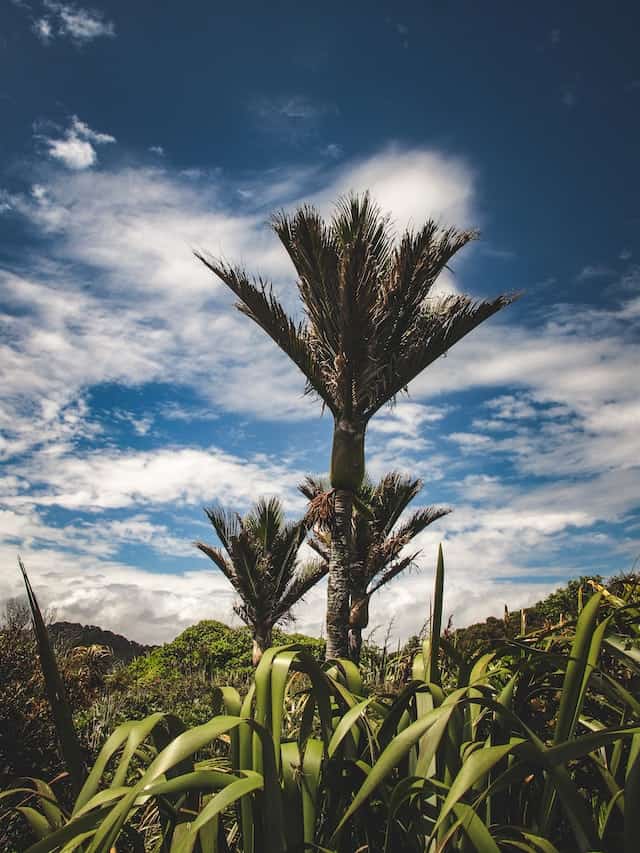
Nikau Palm (Rhopalostylis sapida)
The Nikau Palm is a native New Zealand palm that is found in coastal and lowland forests. It is well-suited to the temperate climate of New Zealand and can be grown in most parts of the country. The Nikau Palm has a distinctive look, with a slender trunk and feathery leaves. It is a slow-growing palm that can reach up to 10 meters in height in ideal conditions.

Chatham Island Nikau
If you’re looking for a Nikau that can thrive in more extreme conditions, the Chatham Island Nikau (Rhopalostylis sapida ‘Chathamica) is a great option to consider. This palm tree is native to coastal conditions, which means it can better withstand the full sun and harsh winds that are common in New Zealand.
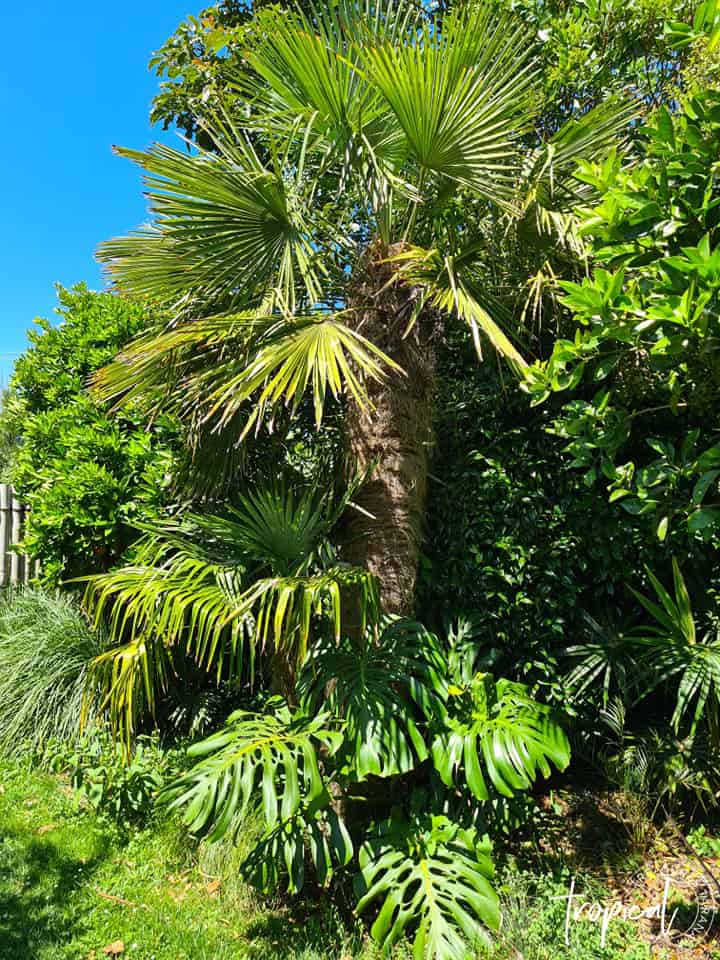
Chinese Windmill Palm (Trachycarpus fortunei)
The Chinese Windmill Palm is a hardy palm that can tolerate cooler temperatures and is a good option for growing in New Zealand’s southern regions. It is a popular palm for landscaping, with a slender trunk and fan-shaped leaves. The Chinese Windmill Palm can grow up to 12 meters in height in ideal conditions. This palm is great for creating a canopy for your more frost tender palms below.
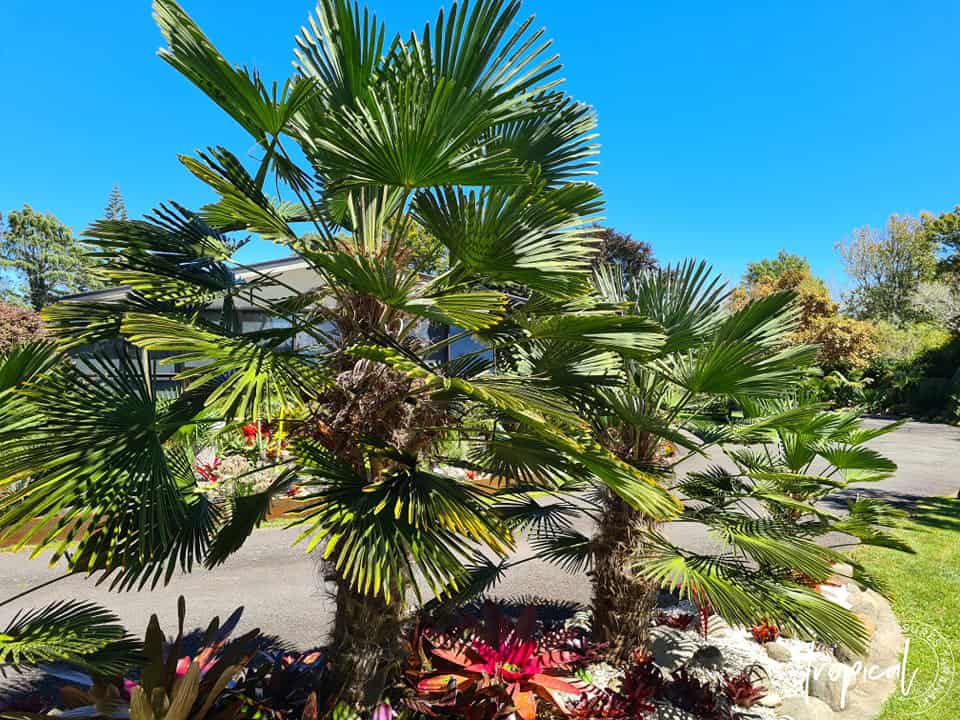
Chusan Palm (Trachycarpus wagnerianus)
The Chusan Palm, also known as the Waggie palm, is a hardy palm tree that can tolerate cooler temperatures, making it a great addition to gardens in cooler parts of New Zealand. This smaller variety has a distinctive look with a slender trunk and fan-shaped leaves that can grow up to 3-4 meters in height in ideal conditions. The Chusan Palm is another hardy evergreen tree that makes a great choice for any garden.
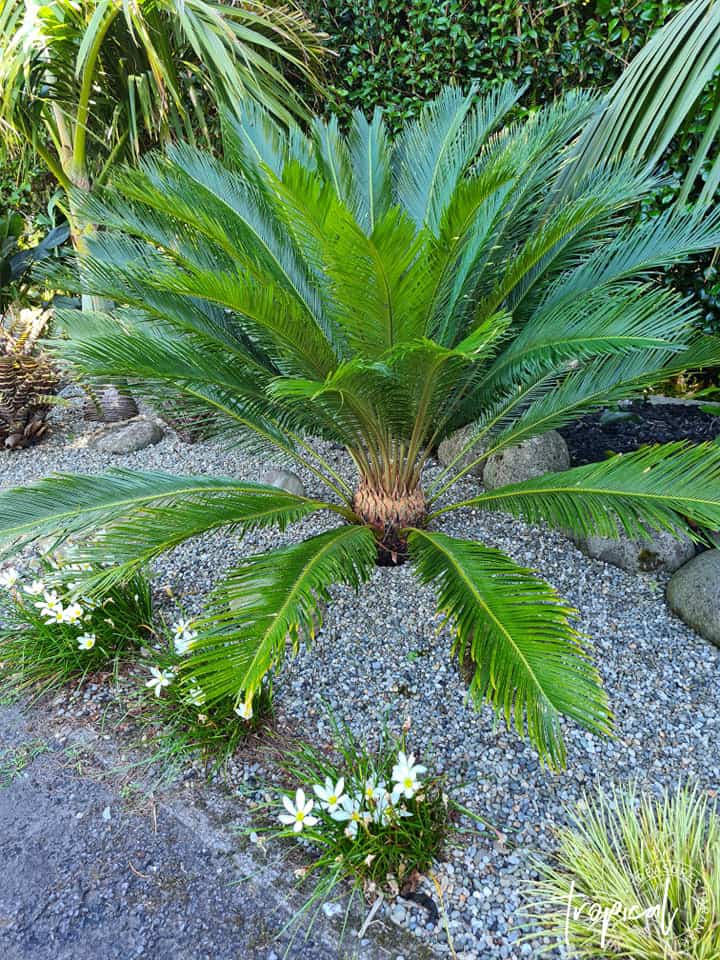
Sago Palm (Cycas revoluta)
The Sago Palm is not a true palm, but it has a similar look and can be grown in most parts of New Zealand they are native to Japan so can even take snow. It has a distinctive look, with a thick trunk and feathery fronds. The Sago Palm is a slow-growing Cycas that can reach up to 3 meters in height in ideal conditions in NZ.
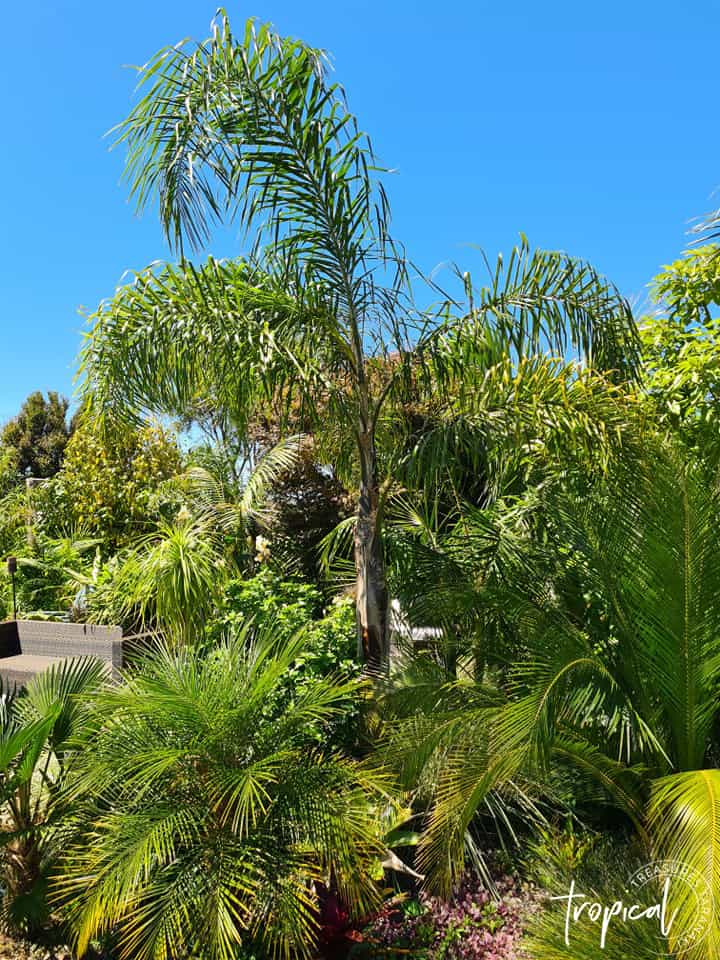
Queen Palm (Syagrus romanzoffiana)
The Queen Palm, or Syagrus romanzoffiana, is another popular palm tree that can be grown in certain regions of New Zealand. Native to Brazil, it is known for its tall, slender trunk and arching, feathery fronds. This palm tree is relatively fast-growing, reaching heights of up to 15 meters in ideal conditions and is perfect to help create a microclimate for your more exotic palm trees and plants. It can tolerate a range of soil types and grow in both full sun and partial shade.
The Queen Palm thrives best in warm, coastal regions of New Zealand, such as Northland, Auckland, and the Bay of Plenty, but can also grow successfully in colder regions such as Taranaki. The Queen Palms are happily grown in our windy, cold property on the outskirts of New Plymouth, Taranaki, where our teperatures are 3 degrees colder in the winter.
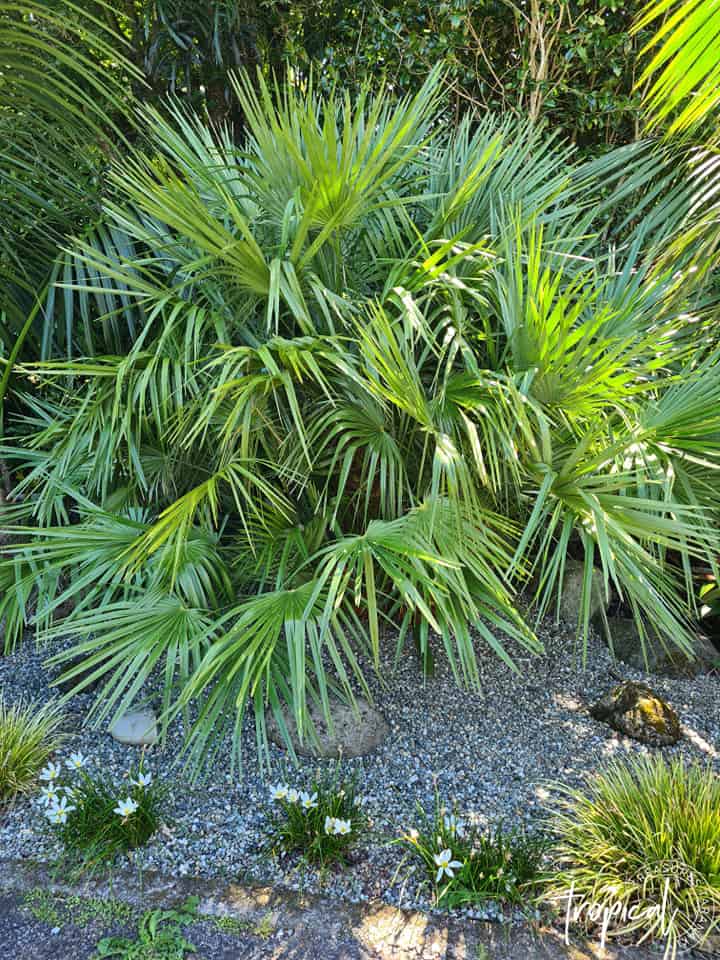
European Fan Palm (Chamaerops humilis)
The European Fan Palm, or Chamaerops humilis, is a delightful small to medium-sized palm tree that is native to the Mediterranean. It has gorgeous, fan-shaped fronds and a small bushy growth habit, which makes it perfect for small gardens or pots. The European Fan Palm can tolerate a variety of soil types and is relatively cold-hardy, making it a great option for cooler regions of New Zealand, such as the lower South Island. It prefers well-draining soil and full sun and can even withstand snow.
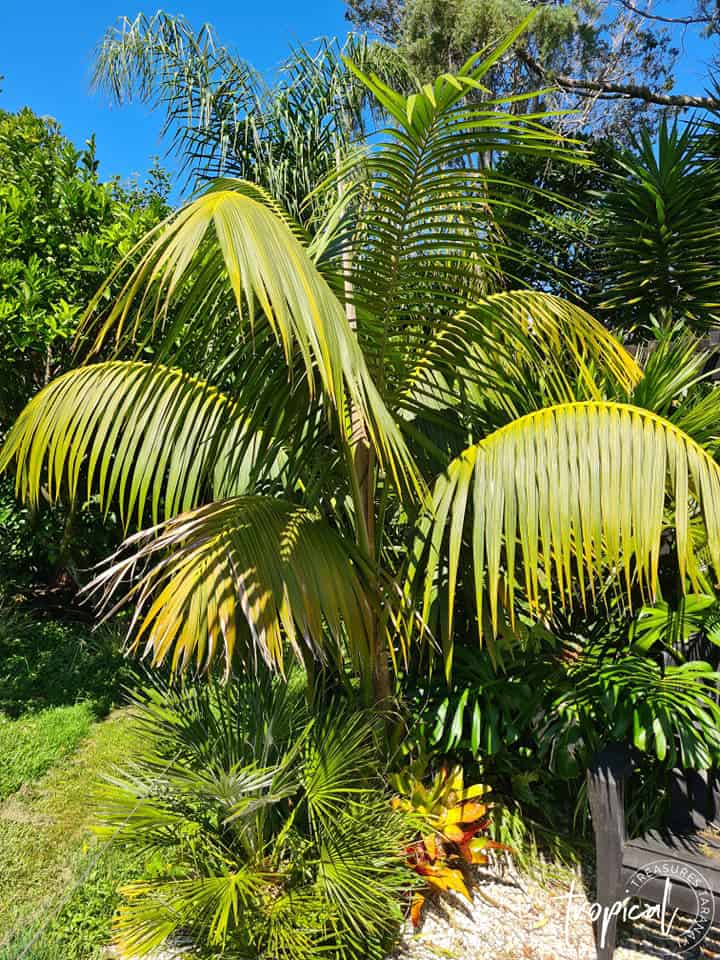
Kentia Palm (Howea forsteriana)
The Kentia Palm, or Howea forsteriana, is a much-loved palm tree that is native to Lord Howe Island, located off the east coast of Australia. It is well-known for its slender trunk and elegant, arching fronds, which give it a tropical, luxurious appearance. The Kentia Palm is a relatively slow-growing plant that can reach heights of up to 15 meters in ideal conditions. It prefers partial shade and is well-suited to the mild, coastal climate of New Zealand’s North Island.
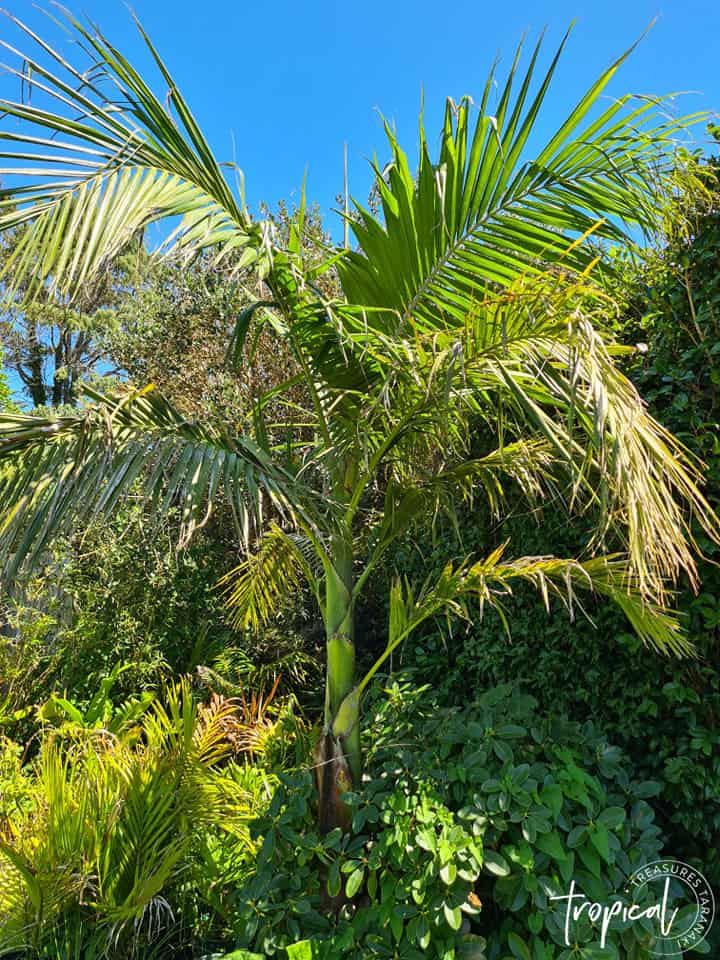
Bangalow Palm (Archontophoenix cunninghamiana)
The Bangalow Palm, or Archontophoenix cunninghamiana, is a tall, slender palm tree that is native to eastern Australia. It is easily recognizable for its elegant, arching fronds and striking, bright green foliage. The Bangalow Palm is a relatively fast-growing palm tree that can reach immpresive heights of up to 20 meters in ideal conditions. It prefers full sun and well-draining soil, and is well-suited to the mild, coastal climate of New Zealand’s North Island.
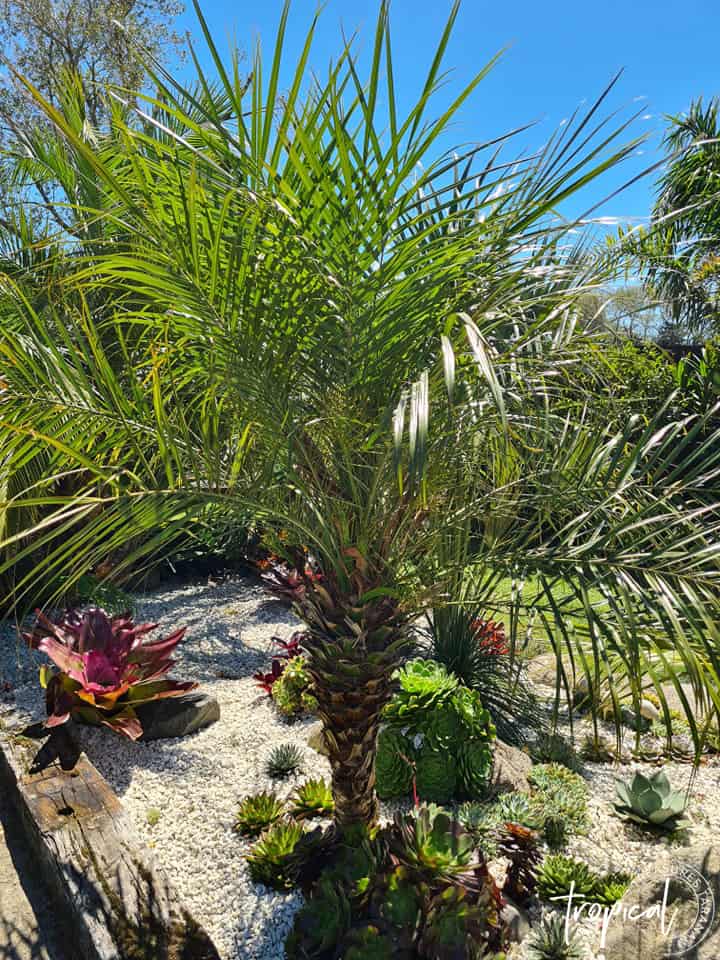
Dwarf Date Palm (Phoenix roebelenii)
Phoenix roebelenii, commonly known as the Dwarf Date Palm, is a widely cultivated species that’s loved for its lustrous green, gracefully arching fronds atop a slender trunk. This palm tree can grow up to around 2 meters and can thrive in most conditions, making it a versatile option that looks equally stunning in sun or shade. It’s also quite hardy, making it a popular choice for those looking to grow smaller palms.
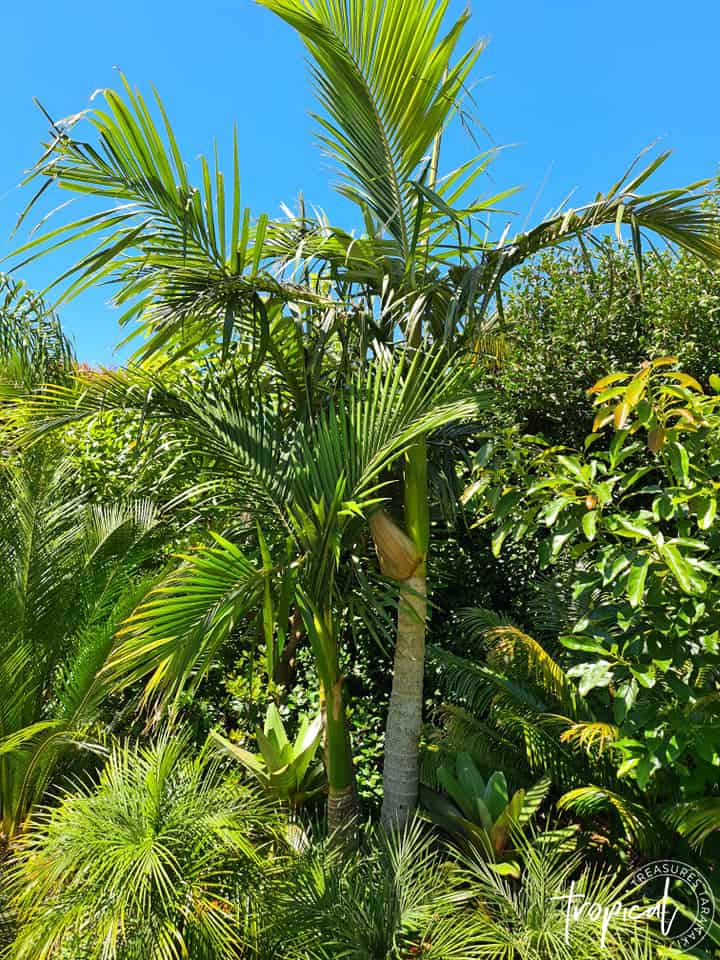
King Palm (Archontophoenix cunninghamiana)
The King Palm, also known as Archontophoenix cunninghamiana, is a graceful tropical palm with silvery undersides to its fronds and a distinctive gray and white trunk. This palm tree prefers full sun to part shade and thrives in sheltered positions, tolerating light frosts. It’s important to keep it well watered during establishment. In just six years, this palm tree can grow up to 6 to 10 meters, making it an excellent choice for those looking for a larger, stunning palm tree.
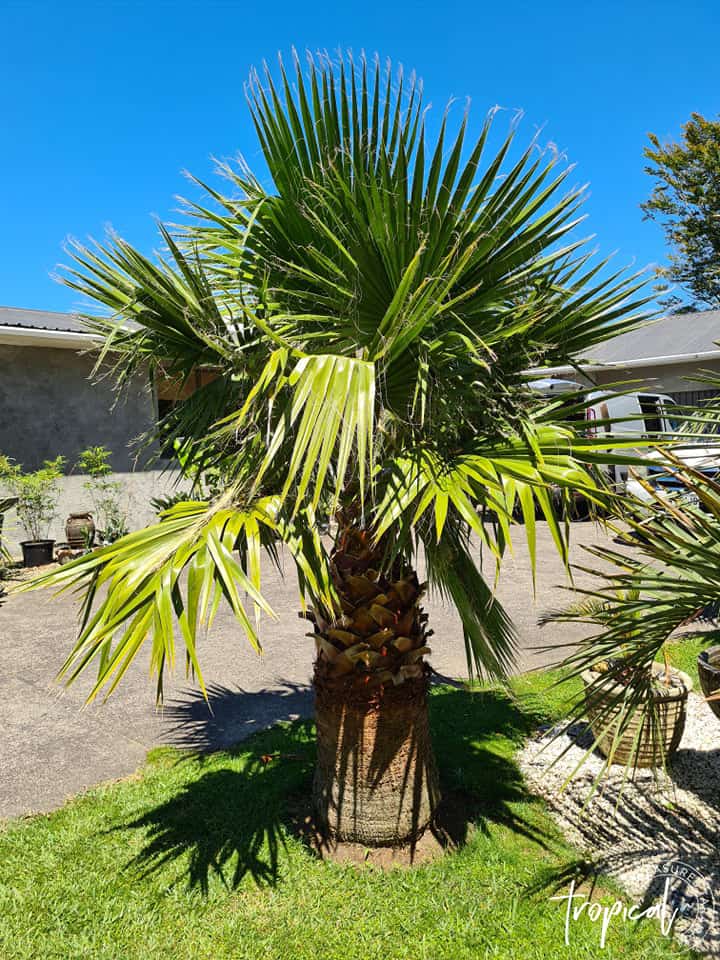
Mexican Fan Palm (Washingtonia robusta)
The Mexican Fan Palm (Washingtonia robusta), also known as the Mexican Washingtonia or Skyduster, is a palm tree native to the Baja California peninsula and small parts of the state of Sonora in northwestern Mexico. Despite its limited native distribution, Washingtonia robusta is one of the most widely cultivated subtropical palm trees in the world. While it can get some leaf damage in high winds, the Mexican Fan Palm’s fast growth rate allows it to recover quickly.
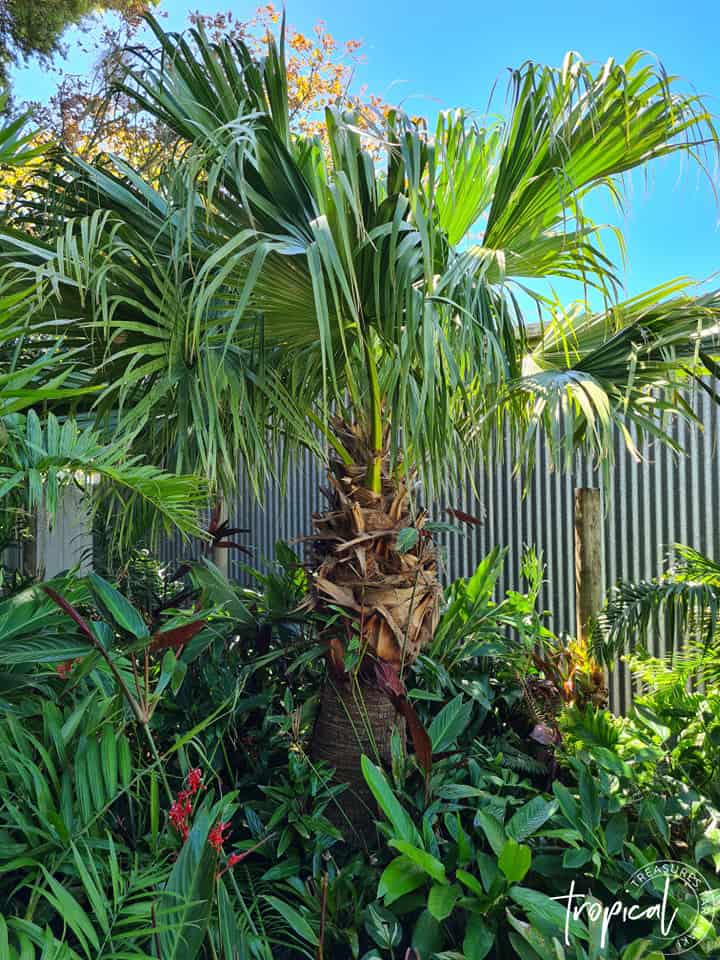
Chinese Fan Palm (Livistona chinensis)
The Chinese Fan Palm (Livistona chinensis), also known as the Fountain Palm, is one of the most graceful fan palm trees, particularly if grown in a shaded position. The Chinese Fan Palm is hardier than it looks and deserves to be grown more often. With drooping tips to the leaves, it has a very lush tropical look that can be a stunning addition to any garden.

Lady Palm (Rhapis excelsa)
The Lady Palm (Rhapis excelsa) is smaller, multi-stemmed palm tree that grows up to 2 meters tall. It is characterized by its segmented fan-shaped fronds. This palm tree prefers full shade or dappled light and is extremely hardy. The Lady Palm is such an underrated small growing palm is an ideal choice for adding a touch of tropical elegance to any garden.

Burrawang Palm (Macrozamia communis)
The Burrawang Palm (Macrozamia communis) is an Australian cycad with a common name that can be a bit misleading, as it is not technically a palm tree. It is, however, a very hardy and attractive plant in the Cycas family that can add a unique touch to any garden. The Burrawang Palm is slow-growing and can tolerate a range of conditions. I have found this cycad very wind & cold hardy.
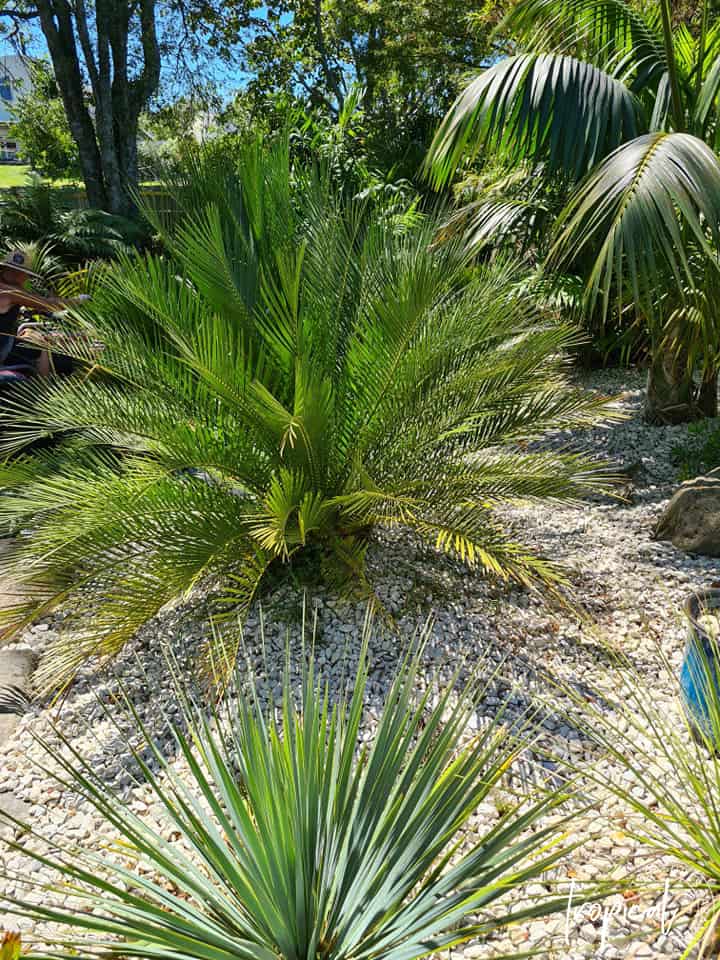
Moores Cycad (Macrozamia moorei)
Moores Cycad (Macrozamia moorei) is a native of Queensland, Australia and is the tallest cycad of the Macrozamia genus. It is a very slow-growing plant that can reach heights of 2-3 meters over time. The Moores Cycad prefers full sun and is highly tolerant of high winds and frosts down to -3°C. It is a stunning and unique addition to any garden.
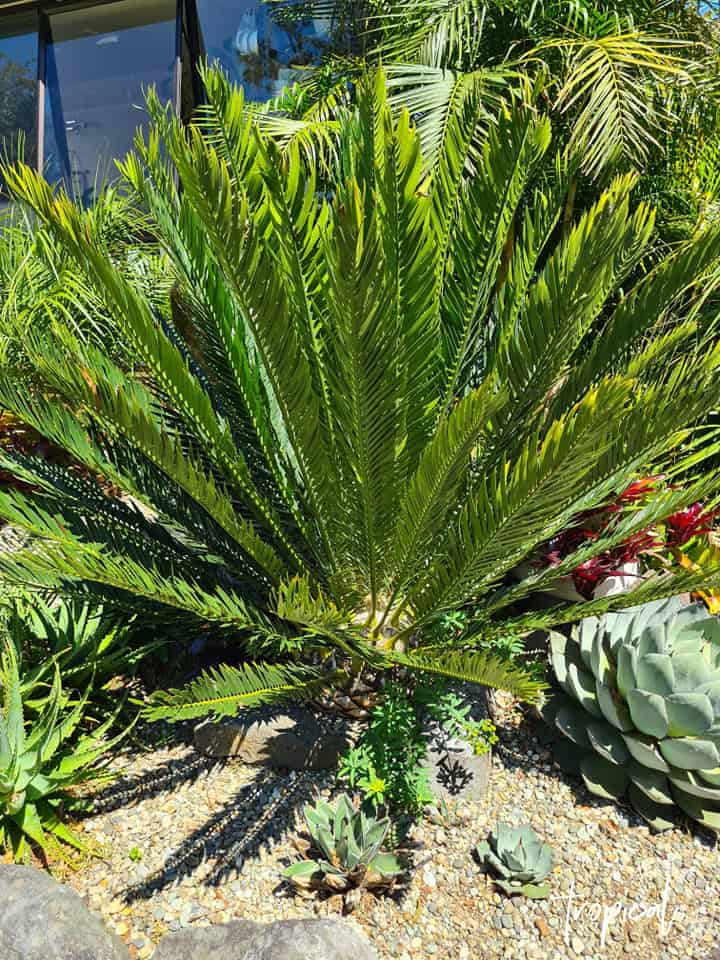
Bread Palm (Encephalartos)
Bread Palm, or Encephalartos, are a type of palm tree that originates from Africa. These magnificent trees can reach up to 6 meters in height. Encephalartos (another from the cycad family) can be an impressive addition to any garden. The grey-blue or green color of the Encephalartos gives these Cycads a striking appearance that is sure to impress.
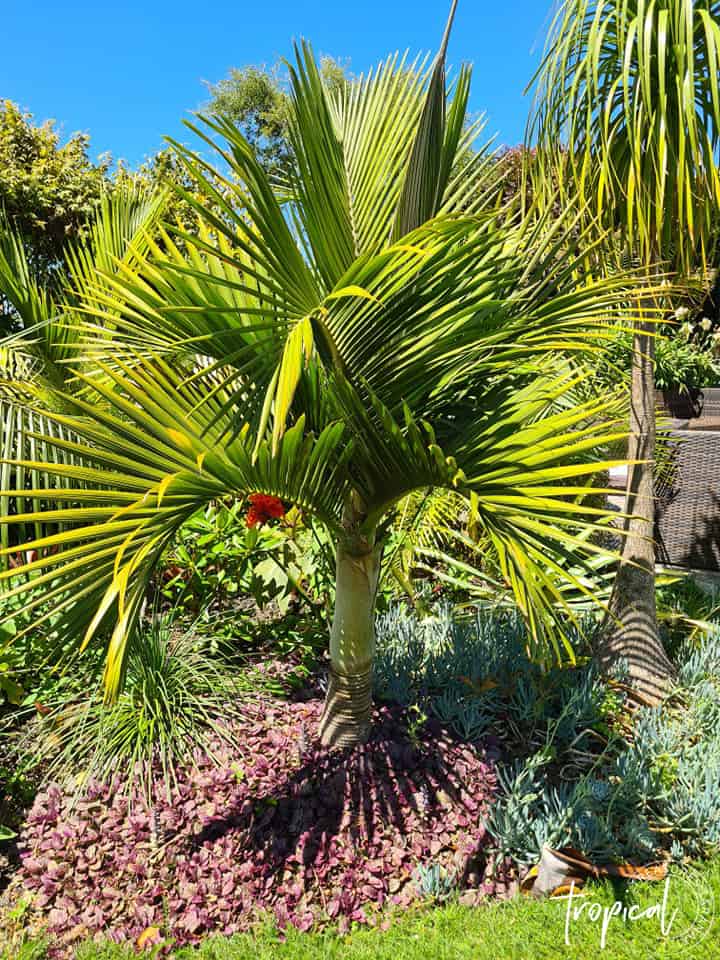
Umbrella Palm (Hedyscepe canterburyana)
The Umbrella Palm, also known as Hedyscepe canterburyana, is a slow-growing palm tree that grows up to 10 metres tall. This palm tree grows on mountain forests, cliffs, and exposed ridges overlooking the sea, at about 400–750 meters of altitude. It has a slender, close-ringed trunk, a prominent silvery crownshaft and a compact crown of dense, dark green, stiffly arching recurved fronds somewhat reminiscent of those of Howea belmoreana palm tree. This palm is proving to be very hardy and can thrive in a variety of environments.

Dwarf Palmetto (Sabal minor)
The Dwarf Palmetto, also known as Sabal minor, is a palm known for its fan shaped leaves, it is a small species of palm. It is native to the deep southeastern and south-central United States and northeastern Mexico. It is naturally found in a diversity of habitats, including maritime forests, swamps, floodplains, and occasionally on drier sites as we have here at our property, planted in high winds and full sun.
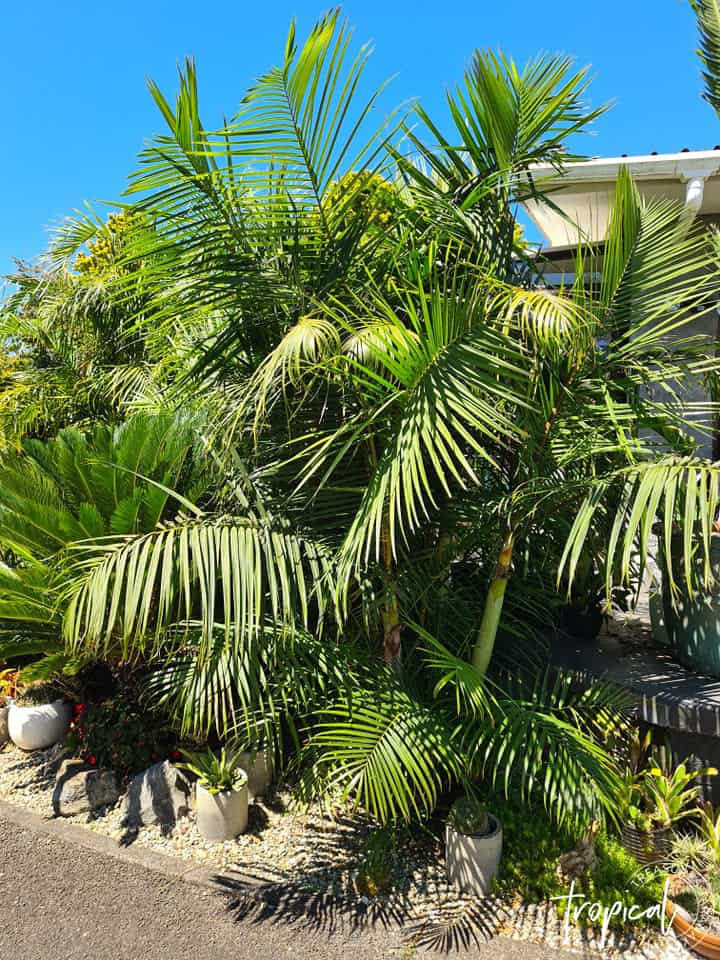
Sugarcane Palm (Dypsis baronii)
Dypsis baronii, also known as the Sugarcane Palm, is a multi-stemmed and evergreen species of palm tree that belongs to the family Arecaceae. It can grow up to 4-5m tall and is named for the scars on its trunks, which resemble sugarcane. It is an excellent choice for adding tropical lushness to your garden.
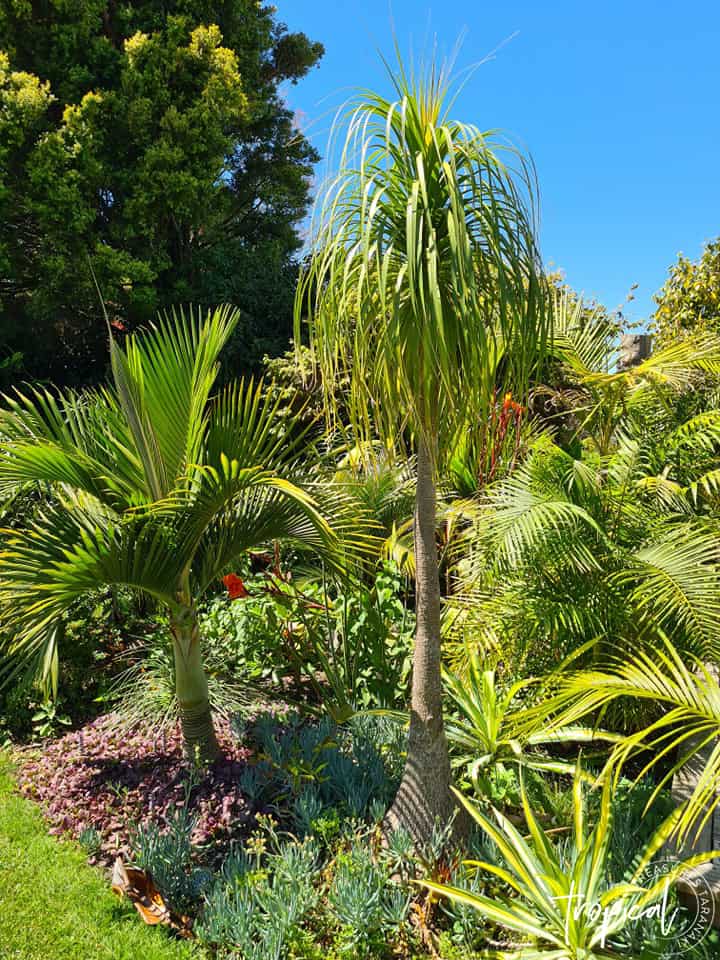
Ponytail Palm (Beaucarnea recurvata)
Ponytail Palm, also known as Elephant’s Foot Tree, it is not a palm tree at all. It is a succulent plant that is mistaken for a palm tree due to its single leafless trunk and the mass of leaves that emerges from the top of the plant. This plant can survive in a range of conditions and is a great option for those looking for a low-maintenance addition to their garden.
Baby Queen Palm (Chamedorea plumosa)
The Baby Queen Palm, or Chamedorea plumosa, is a stunning palm with thin leaflets that give it a delicate, fluffy appearance when planted in multiples. The Baby Queen Palm can tolerate full sun but is also ideal for dappled light areas, making it a versatile option for your garden.
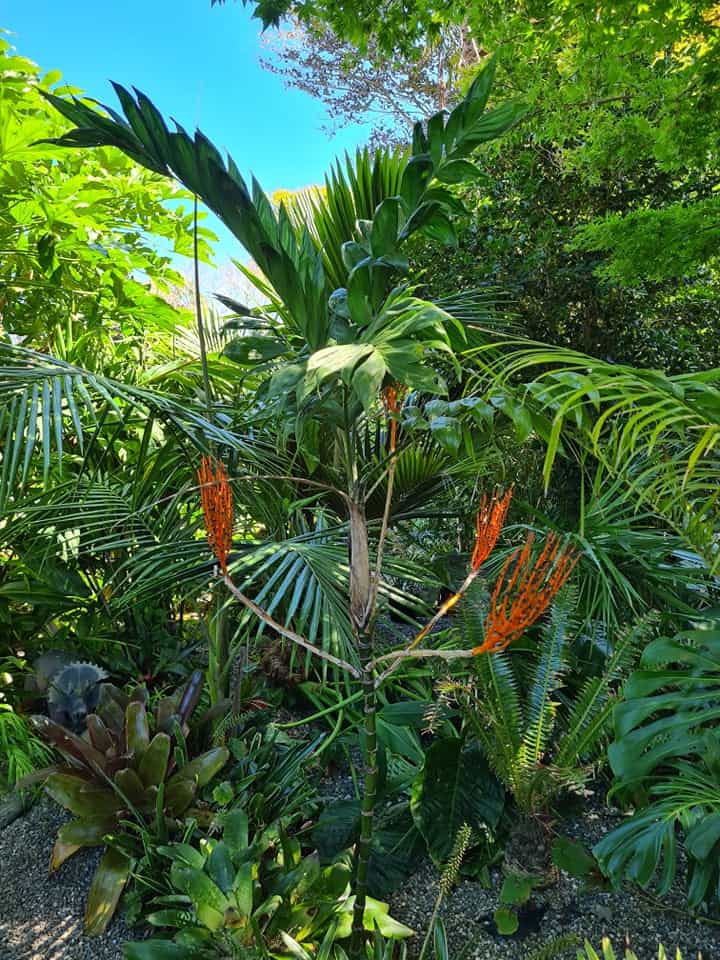
Caugui Palm (Chamaedorea oblongata)
The Caugui Palm, or Chamaedorea oblongata, is a beautiful single or cluster trunk palm that grows to 1-3 meters in height. With its green, ringed trunk and broad elliptic leaflets, this attractive palm is easy to care for and can tolerate of low light, making it an excellent choice for those looking for a palm tree that tolerates shade.
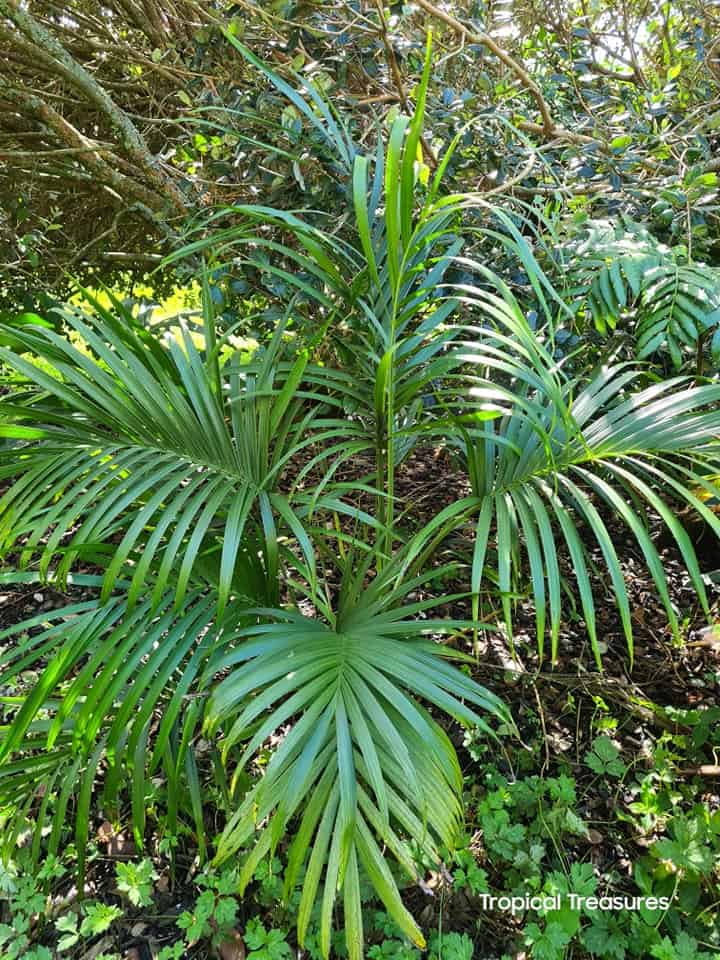
Cascade Palm (Chamaedorea cataractarum)
The Cascade Palm, or Chamaedorea cataractarum, is a small and multi-stemmed palm from Guatemala and southern Mexico. This palm has dark green thin leaves and prefers to live under share or filtered light, making it a perfect understory palm tree. The Cascade Palm grows up to 2 meters in height and 2 meters wide.
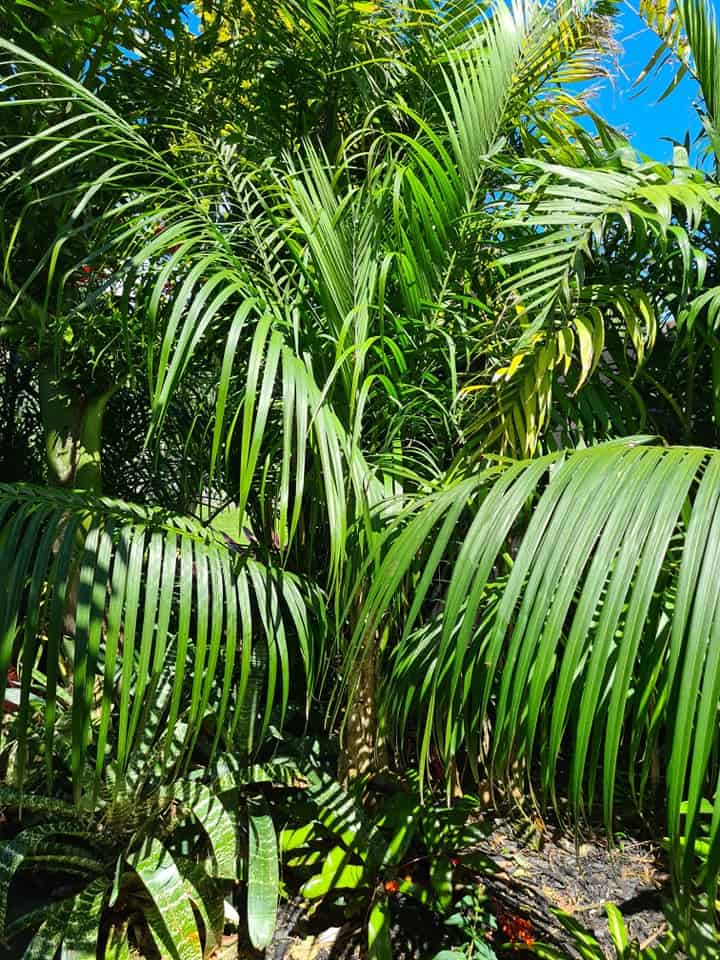
Mini Majestic Palm (Ravenea glauca)
The Mini Majestic Palm, also known as Ravenea glauca, is a delicate and slim palm originating from the dry forests and ravines of Madagascar. Its slender trunk grows up to 3 meters in full sun to part shade and is adorned with a feather-like foliage in a bluish-green color, which is the reason for its “glauca” name. While it may resemble its larger cousin Ravenea rivularis, it is a hardier species. It should be well-watered during summer months. Despite its delicate appearance, this palm is relatively fast-growing and is a wonderful alternative to the Dwarf Date Palm.
Walking Stick Palm (Linospadix monostachyos)
The Walking Stick Palm, also known as Linospadix monostachyos, is a slow-growing and delicate palm that is commonly found in the subtropical forests of eastern Australia. Its slender trunk is covered in rings that resemble bamboo rings. It is an understorey palm that grows to about 3 meters in height, making it an attractive addition to any garden. This palm is slow-growing and requires a protected, shady, and moist site to thrive.
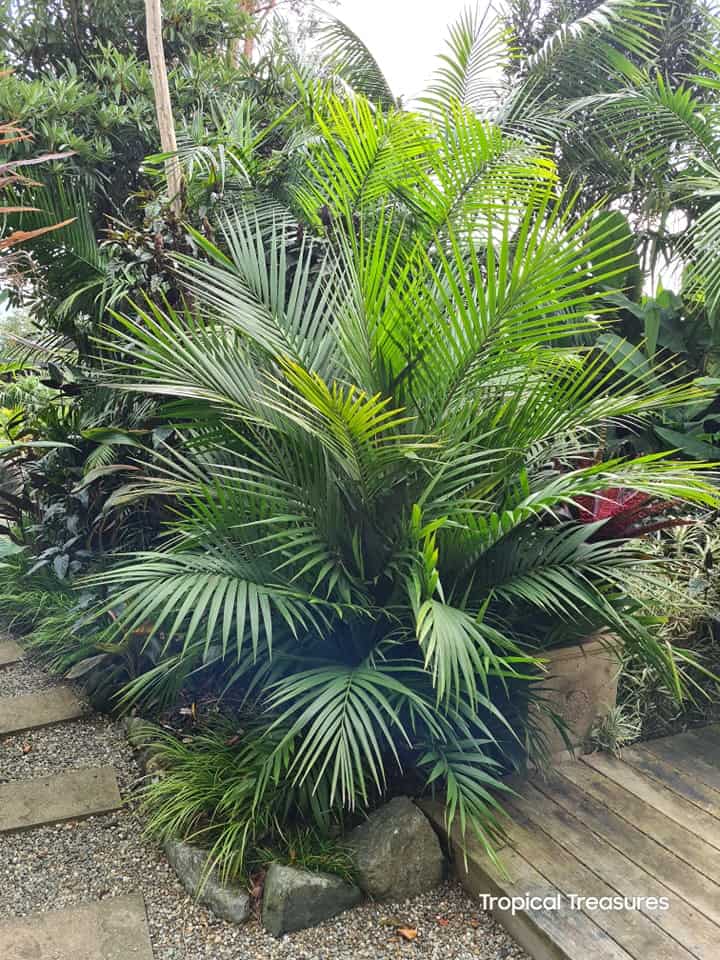
Atherton Palm (Laccospadix australasica)
Atherton Palm, or Laccospadix australasica, this slow-growing, moderate-sized palm can be solitary or clumping, grows to 7 meters in height in solitary palms. The fronds are feather-like and new fronds are often brown or red. The fruits are small and red. The Atherton Palm is an attractive palm that can also be grown in a pot. It is a very adaptable and highly attractive Australian palm.
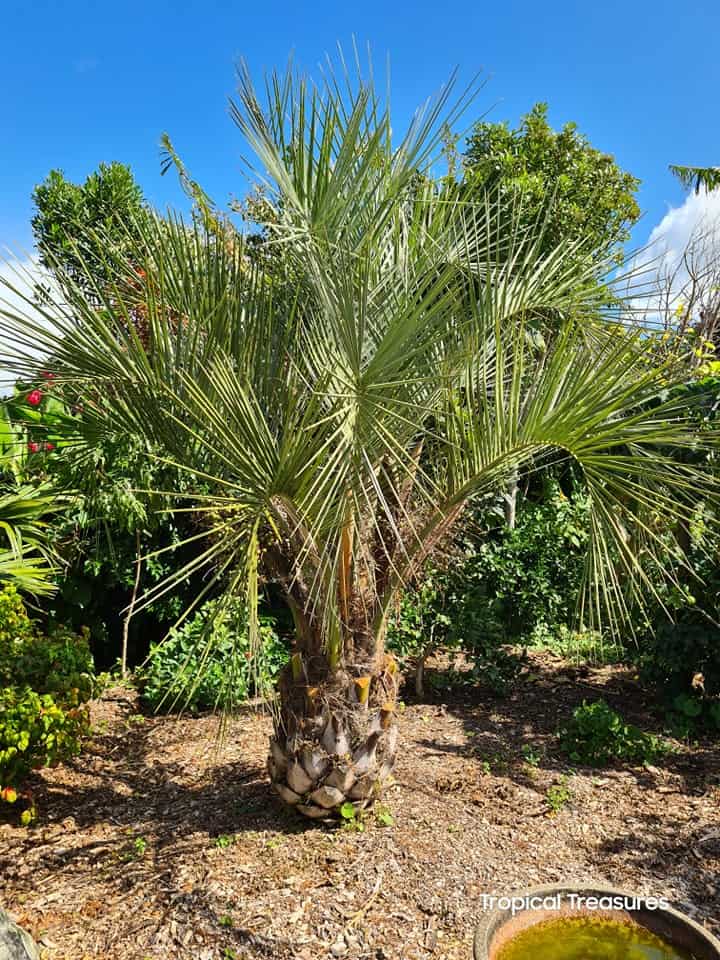
Jelly Palm (Butia capitata)
The Jelly Palm, or Butia capitata, originating from South America. This plant is a breeze to grow and can withstand a variety of temperature ranges. Although it takes time, this palm can eventually reach heights of up to 3-6 meters, and in the summer it produces small yellow, white, or red flowers. Once pollinated, these flowers bear delicious, date-sized fruits with a flavor reminiscent of pineapple.
This palm’s hardiness is not to be underestimated. Prefers full sun or partial shade. The Butia capitata is low-maintenance, with a strong trunk and fronds that don’t easily break. If you’re looking for a beautiful, easy-to-care-for palm that can thrive in a variety of conditions, consider the Butia capitata for your garden or landscape.
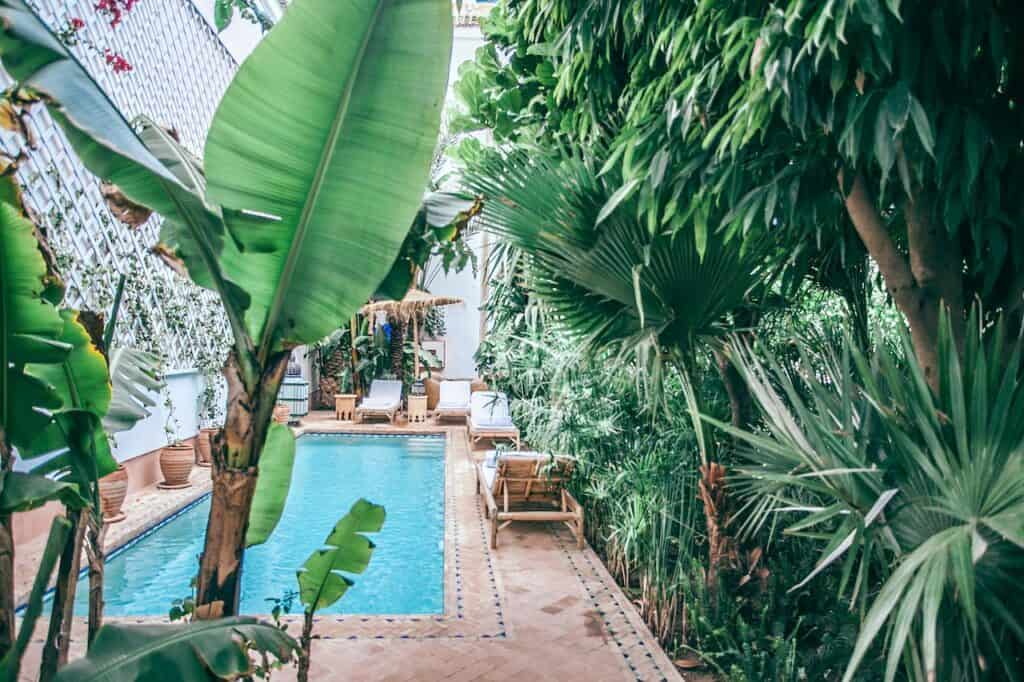
Growing Palm Trees in Taranaki
The Taranaki region of New Zealand is known for its mild, coastal climate, which is ideal for growing a range of subtropical and tropical plants, including certain species of palm trees. However, the region is also prone to heavy rainfall and strong winds, which can pose challenges for growing palm trees.
To ensure the best possible growing conditions for your palm tree in Taranaki, it is important to choose a sheltered location that is protected from strong winds. For additional protection from extreme weather conditions, you may want to consider planting your palm tree under the canopy of other plants and trees.
Additionally, in areas of high rainfall, it is important to ensure that the soil is well-draining to avoid the risk of root rot. Adding a layer of organic mulch around the base of the tree can also help to retain moisture and keep the soil healthy. Feel free to visit us or contact us for more advice on how to ensure the best start for your palm tree.
Palm Trees Thrive in New Zealand
By following these general care tips, you can ensure that your palm tree thrives and as you #createthetropicsatyourplace. Nothing more beautiful than to add a tropical beauty to your garden or landscape.



